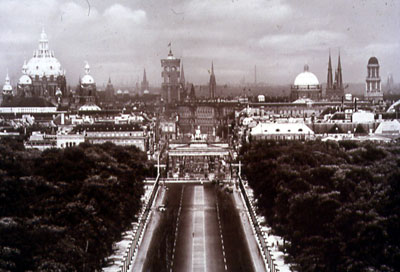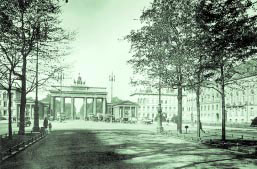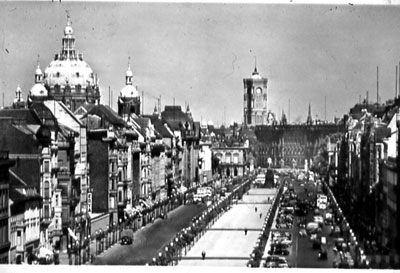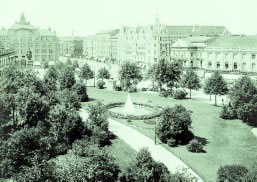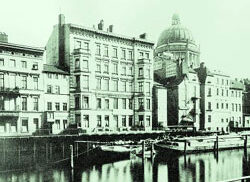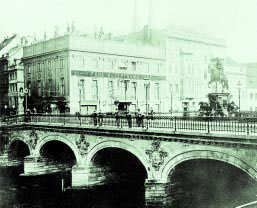The Berlin City Palace was the center of the so-called classical mile between the Pariser Platz square with the Brandenburg Gate in the west and the Alexanderplatz in the east. Because of it there arose out of the provincial capital of the Mark of Brandenburg the royal Residence City and capital of Prussia and from that the imperial capital, without which the present role of Berlin as the federal capital would be unthinkable.
This development can be seen in the place names of the famous squares:
The Pariser Platz received its name in memory of the triumphal entry into Paris of the victors in the war of liberation against Napoleon in 1814, namely Russia, Prussia and Austria. As a result of this event, Prussia became definitely numbered among the states forming the circle of great powers in Europe.
Palace and the Boulevard Unter den Linden in the 1930s. The old linden trees were felled to make room for the construction of the S-Bahn elevated railway. The small new trees are hardly recognizable in this picture, with the result that the Palace and cathedral dominate the boulevard even more.
During these years, the former oxen market was renamed the Alexanderplatz in connection with the visit of the Russian Czar. It thereby symbolized the bridging function of Prussia between western and eastern Europe, a role which Berlin and Germany are also seeking to play today. Berlin always had a strong citizenry, which, for the most part, kept a critical distance from the ruling house. Nevertheless, the two groups had better relations than in other European cities.
The city was marked by mutual tolerance from the time of the issuance of the so-called “Edict of Potsdam” by the Great Elector. From then on, the state supported steady influx of people from many lands caused a continuing strong intellectual, cultural and economic flowering of Berlin. The houses of the citizens stood in the immediate neighborhood of the Palace.
Small, mostly with only two stories, and characterized by Prussian simplicity, these homes were the hallmark of Berlin right up to the time of the empire. They stood in charming contrast to the magnificent edifices of the city center. The nobles lived for the most part in the countryside and maintained only some small palaces for high officials and ministers of the Prussian State in the city.
Only in the immediate precincts of the Palace, in the eastern lindens, on the Palace island and on the Gendarmenmarkt Square there arose large magnificent buildings, which, like satellites about a sun, oriented themselves toward the Palace. Each of these individual edifices received its meaning from the mass of the Palace in the middle of the city. Through the various relationships of these buildings to one another and with the Palace, they created a unique, expressive city panorama, the center point of which crystallized in the Palace. This grouping, enriched by park like plazas and important monuments, melded together into a total work of art (Gesamtkunstwerk) which was Berlin. Not until Berlin became the German imperial capital did the western part of the city develop architecturally into the economic and world metropolis of the so-called “Founders years” of the 1870s and 80s.
The towers of the two cathedrals were modeled after the plan by Eosander for the dome above the Palace’s triumphal entrance which was never built.
However, in spite of this, the Palace and the Pleasure garden, together with the Gendarmenmarkt and the eastern section of Unter den Linden, continued to be, almost without further changes, the urban high point of Berlin.
 Deutsch
Deutsch English
English Francais
Francais




